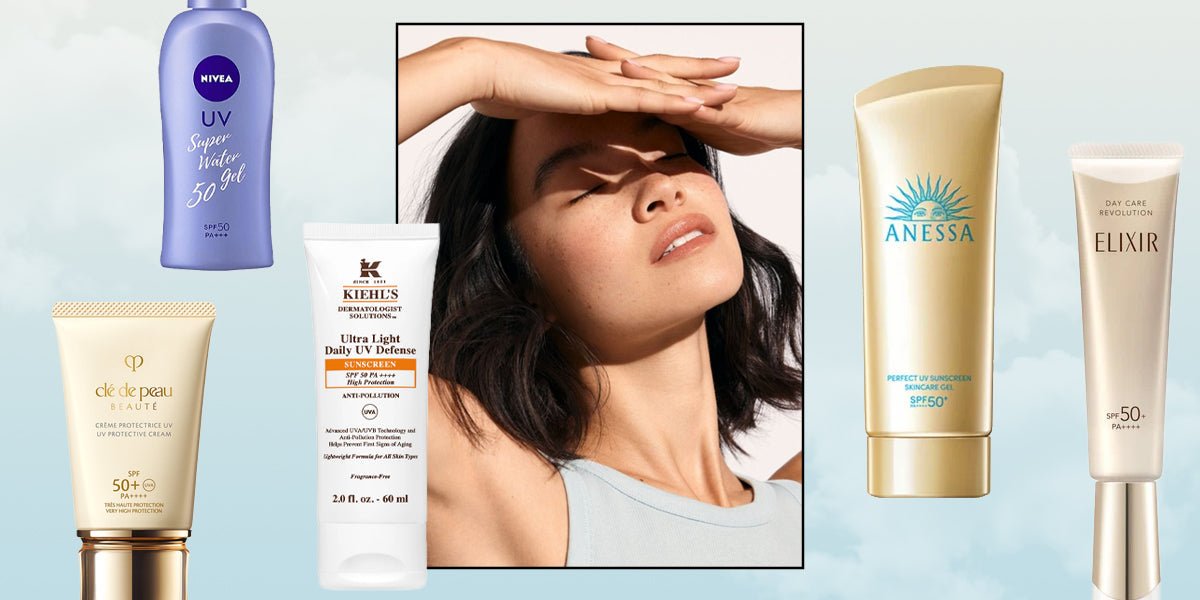
Invisible Sun Damage: Why Daily SPF Is a Non-Negotiable Step
|
|
Time to read 5 min
|
|
Time to read 5 min
You’ve probably heard it countless times: wear sunscreen every day. But what if you don’t see any sunburn or redness? Does your skin still need it? The truth is that the most damaging effects of the sun often go unnoticed. Invisible sun damage silently accelerates aging, dulls your complexion, and increases your risk of skin diseases over time. In this article, we’ll break down what invisible sun damage really is, how it impacts your skin on a cellular level, and why SPF should never be skipped—rain or shine.
Sun damage isn’t limited to visible burns. It’s a gradual process that happens every time your skin is exposed to ultraviolet (UV) rays. The two main types of UV radiation are UVA and UVB. UVA rays penetrate deep into the skin, leading to premature aging and wrinkles, while UVB rays primarily cause sunburn and immediate damage. Even when you don’t burn, UVA rays can silently degrade collagen and elastin, causing long-term structural damage.
Invisible sun damage shows up later as pigmentation, rough texture, fine lines, and loss of firmness. It accumulates over years, meaning that every unprotected exposure—even short trips outside or sitting near a sunny window—adds up.
Type of UV Ray |
Depth of Penetration |
Effect on Skin |
|---|---|---|
UVA |
Deep (dermis layer) |
Causes premature aging, wrinkles, and DNA damage |
UVB |
Superficial (epidermis) |
Causes sunburn and immediate inflammation |
HEV/Blue Light |
Medium (from screens and sunlight) |
Can trigger hyperpigmentation and oxidative stress |
SPF stands for Sun Protection Factor, and it measures how effectively a sunscreen protects against UVB rays. For example, SPF 30 blocks about 97% of UVB radiation, while SPF 50 blocks about 98%. However, the key isn’t just the number—it’s consistency. Sunscreen should be applied generously and reapplied every two hours to ensure continuous protection.
Broad-spectrum sunscreens shield against both UVA and UVB rays. They contain filters like zinc oxide, titanium dioxide, or avobenzone that reflect or absorb harmful radiation. Using one daily forms an invisible barrier that prevents damage before it starts.
Despite its importance, sunscreen remains one of the most misunderstood skincare steps. Let’s debunk a few myths that keep people from using it properly.
| Myth | Reality |
|---|---|
| “I only need sunscreen on sunny days.” | UV rays penetrate clouds and windows—daily protection is essential. |
| “I have darker skin, so I don’t need sunscreen.” | Melanin offers some protection but doesn’t prevent DNA damage or pigmentation. |
| “Makeup with SPF is enough.” | Most makeup SPF levels are too low for full protection. Always apply a dedicated sunscreen underneath. |
| “I don’t go outdoors much.” | Indoor light and screen exposure can still trigger sun-related skin aging. |
Make sunscreen the last step of your morning routine, even on cloudy or indoor days. Use about two finger-lengths of product for your face and neck to ensure full coverage.
Sunscreen wears off with sweat, touch, or time. Reapply every two hours or after swimming or wiping your face. Keep a travel-sized bottle in your bag for convenience.
If you have oily or acne-prone skin, opt for a lightweight, non-comedogenic formula. For dry skin, use a hydrating sunscreen with ceramides or hyaluronic acid. Mineral sunscreens are ideal for sensitive skin, while chemical ones offer a more sheer finish.
The ears, neck, hands, and even the tops of your feet are vulnerable to sun damage but often neglected. Apply SPF evenly to all exposed areas for complete protection.
Antioxidants like vitamin C or niacinamide boost your sunscreen’s power by neutralizing free radicals. Pairing SPF with antioxidant serums helps fight the oxidative stress that contributes to aging.
While SPF is essential, it’s not invincible. Combine it with protective habits—wear hats, sunglasses, and seek shade during peak sun hours (10 AM–4 PM).
After a long day, help your skin recover with soothing and hydrating ingredients like aloe vera, centella asiatica, or panthenol. These promote skin renewal and calm any irritation from UV exposure.
You might not see it immediately, but your skin often gives subtle clues that sun exposure has taken a toll.
Early Signs |
Advanced Signs |
|---|---|
Uneven tone or dullness |
Deep wrinkles and sagging |
Dry or rough patches |
Persistent pigmentation or dark spots |
Redness or sensitivity |
Visible broken capillaries |
If left unchecked, these symptoms can progress to chronic skin issues, including sunspots, uneven texture, or even precancerous changes.
Here’s a sample routine that makes sun protection effortless while maintaining healthy, glowing skin.
| Step | Product Type | Purpose |
|---|---|---|
| 1 | Gentle cleanser | Removes impurities without stripping |
| 2 | Vitamin C serum | Adds antioxidant protection |
| 3 | Lightweight moisturizer | Seals in hydration |
| 4 | Broad-spectrum SPF 30+ | Shields from UV and environmental stress |
| 5 | Optional: Setting spray with SPF | Provides reapplication throughout the day |
Regular use of sunscreen doesn’t just prevent burns—it preserves youth. Studies show that daily SPF users experience 24% less skin aging compared to those who use it occasionally. It also maintains skin clarity, prevents hyperpigmentation, and reduces the risk of skin cancer. In short, SPF is the simplest anti-aging product in your arsenal.
Invisible sun damage is a slow but powerful force that silently ages and weakens your skin. Protecting yourself with daily SPF is one of the most effective and affordable steps you can take for lifelong skin health. Whether you’re indoors or out, cloudy or clear skies, sunscreen remains your first line of defense. Healthy, youthful skin starts with consistent protection—because prevention is far easier than repair.
